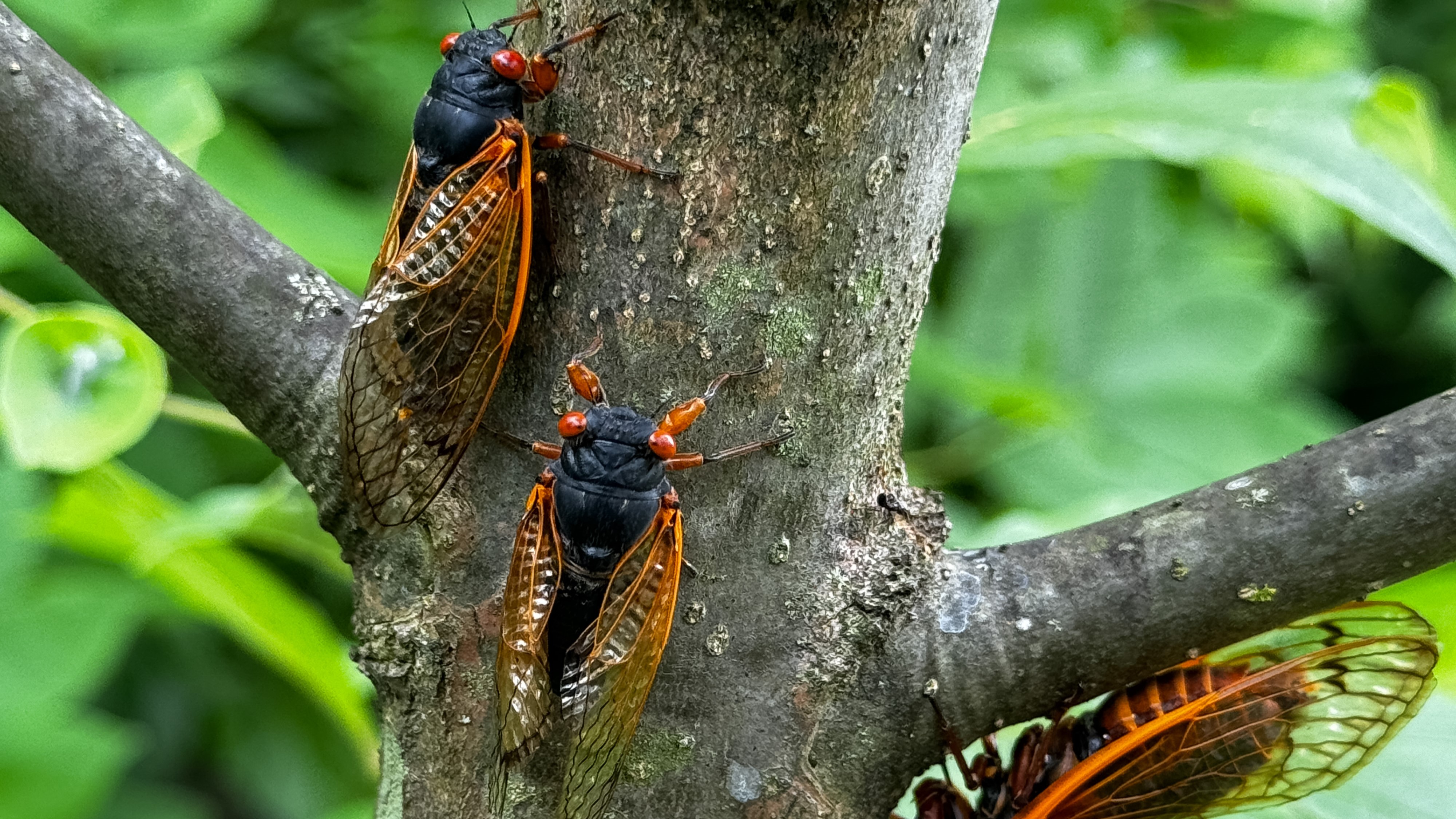Double cicada bloom 2024: Google Doodle celebrates once-in-221-year event with band of bugs
The "cicada-geddon" is the result of the co-emergence of Brood XIII and Brood XIX, with billions of bugs crawling out of the ground across parts of Eastern U.S.

Today's Google Doodle celebrates the ongoing "cicada-geddon" — where two broods of the insects have simultaneously emerged for the first time in 221 years. The double bloom event has led to billions if not trillions of cicadas rising from the ground across parts of the Midwest and Southeast.
Brood XIII and Brood XIX emerge on 17- and 13-year cycles, respectively. "The co-emergence of any two broods of different cycles is rare, because the cycles are both prime numbers," John Cooley, founder of the Periodical Cicada Project and a professor in University of Connecticut's Department of Ecology and Evolutionary Biology, previously told Live Science. "Any given 13- and 17-year broods will only co-emerge once every 13 x 17 = 221 years."
The first cicadas of this year's dual emergence appeared in April, and the event is now in full swing. During the event, juvenile bugs that have been living underground hatch and appear at the surface as nymphs. They then transform into adults and shed their exoskeletons, before climbing upwards into trees, where they mate.
Males emit a loud shrieking noise to attract females, which return their calls with a clicking sound. After mating, the females lay their eggs. After the eggs hatch, they feed on tree sap before burrowing underground to begin a new cycle.
The event lasts until all the cicadas that have been living underground have come to the surface and complete their life cycle — about 3 to 4 weeks after emerging, according to the Smithsonian National Museum of Natural History.

This year's double brood event is expected to last until June, although timings depend on exactly when the cicadas start appearing. In Illinois, Virginia, North Carolina, South Carolina, Georgia, Alabama, Mississippi, Tennessee, Kansas and Missouri, sightings were being widely reported by April 25, according to the Cicada Safari app, which tracks the event.
Sign up for the Live Science daily newsletter now
Get the world’s most fascinating discoveries delivered straight to your inbox.
"In any given area, the emergence lasts on the order of a month, depending on the weather," Cooley said. "But since this year's emergences cover such a range of latitude, there will be cicadas out much longer," he added.
Today's Google Doodle was created not only to celebrate this rare event but also to remind people that there is no reason to fear the bugs, which play an important role in their ecosystems.
"As the cicada shells pile up on trees and sidewalks and the buzzing fills your ears, try not to let them bug you," Google Doodle representatives said in a statement. "These clumsy insects fly by the trillions but don't sting, bite, or poison. Plus, many predictions show they'll be out of your hair by late June, leaving behind a feast for local animals like birds and raccoons."

Hannah Osborne is the planet Earth and animals editor at Live Science. Prior to Live Science, she worked for several years at Newsweek as the science editor. Before this she was science editor at International Business Times U.K. Hannah holds a master's in journalism from Goldsmith's, University of London.









